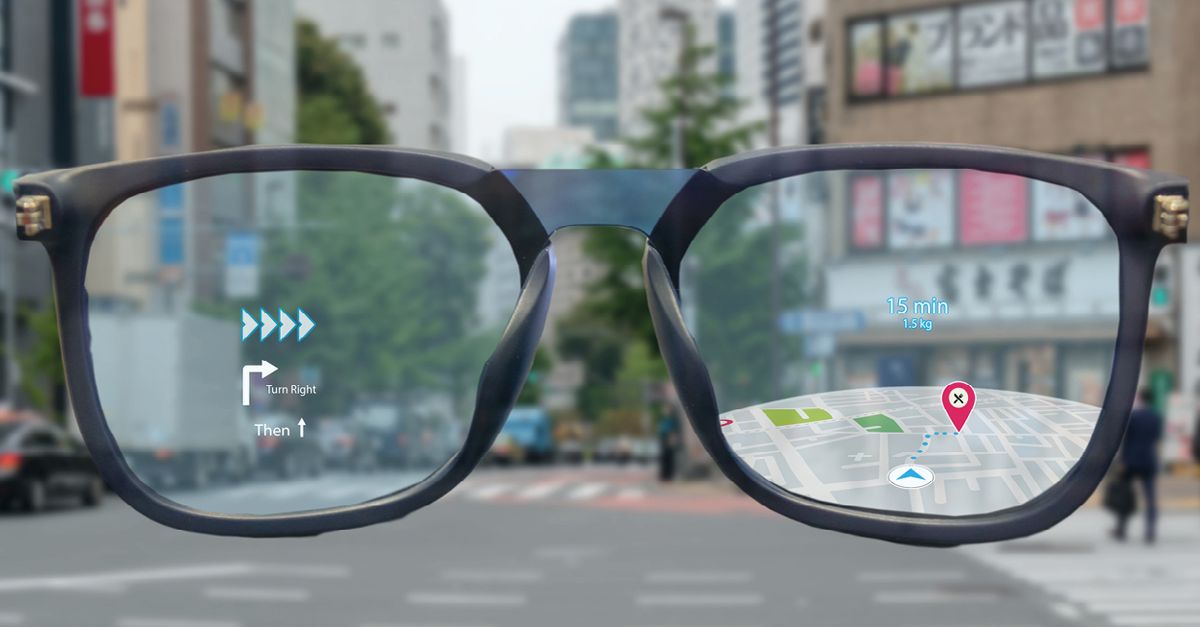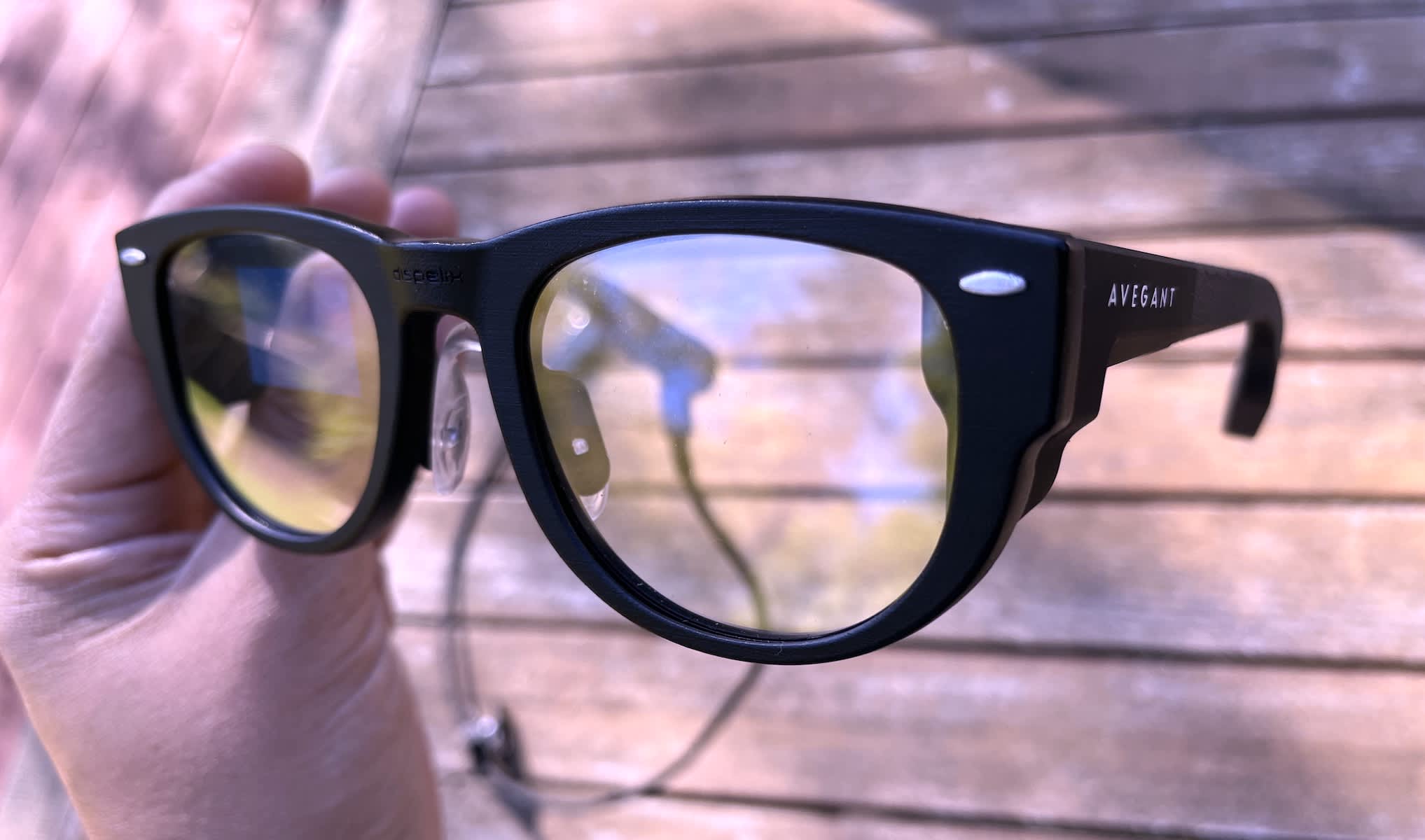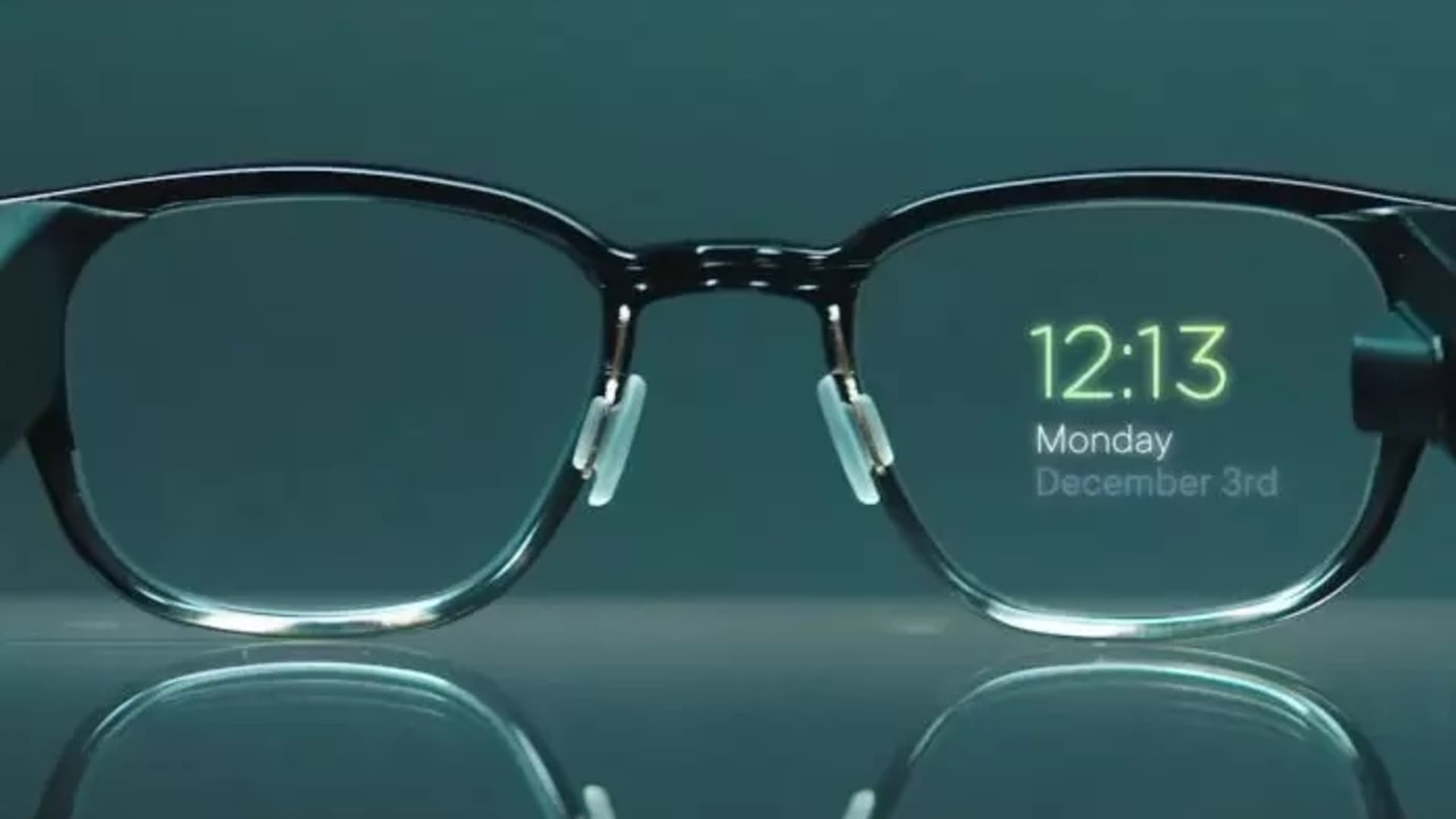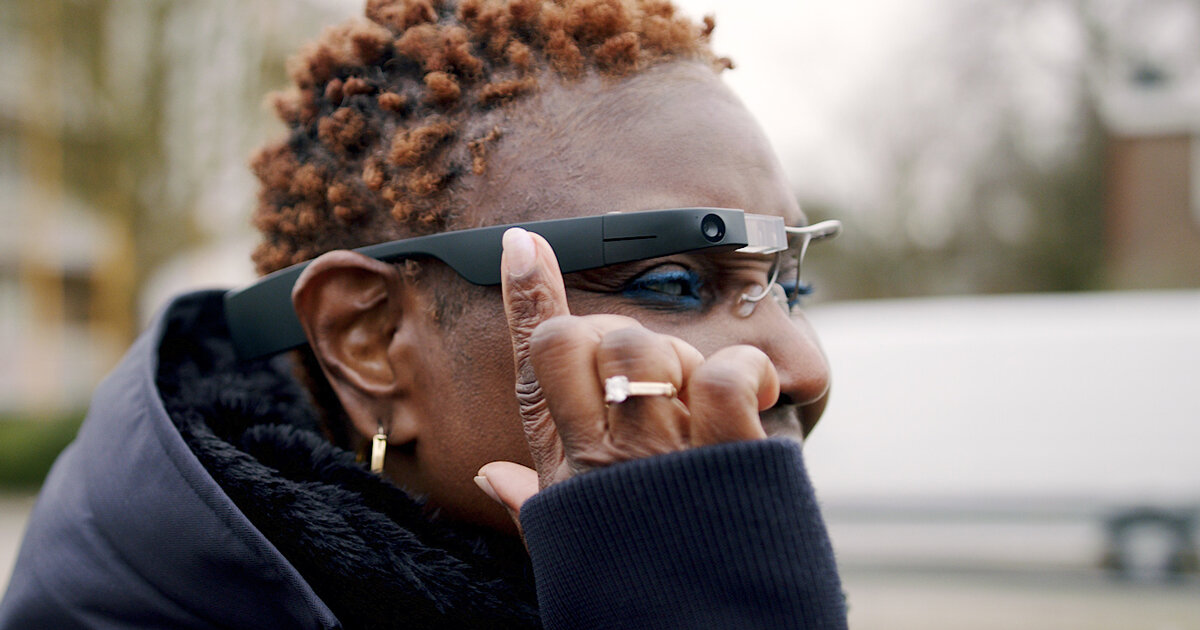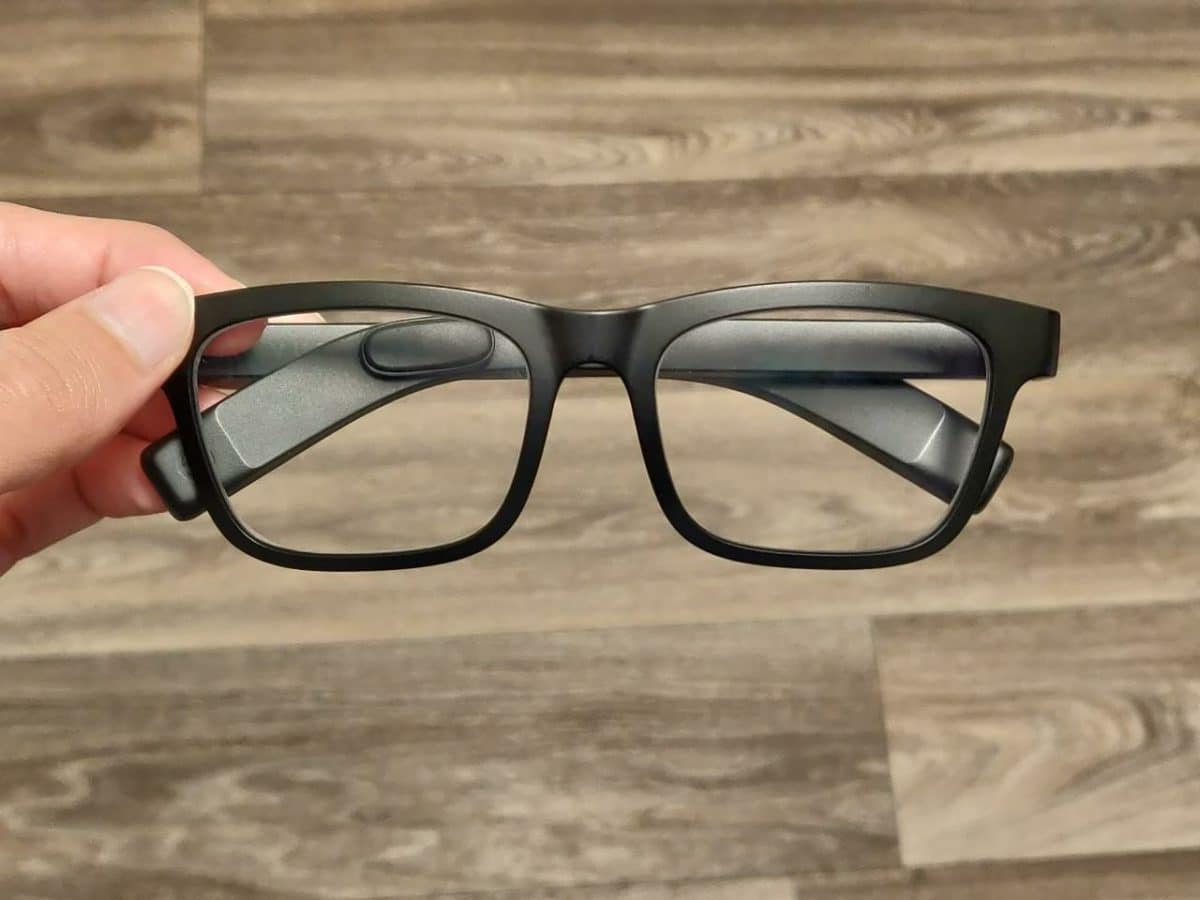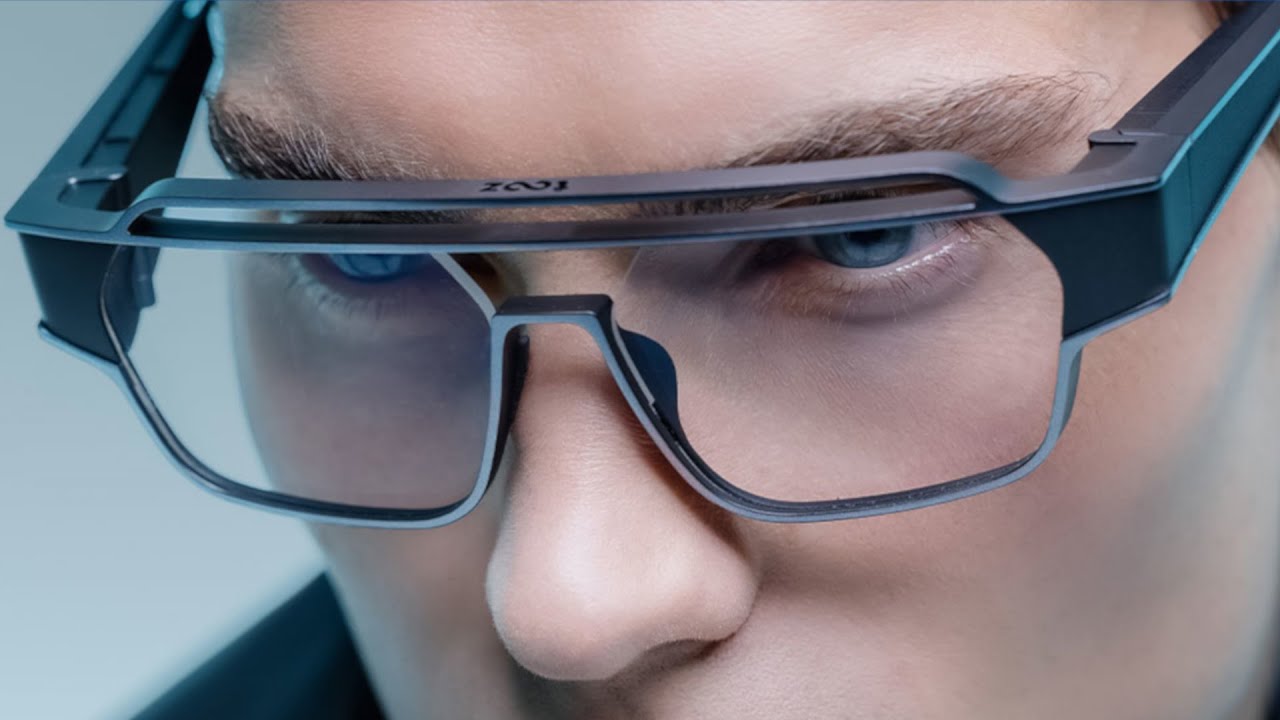What are Smart Glasses?
Smart glasses, also known as augmented reality glasses or AR glasses, are wearable devices that provide users with a digital overlay of information onto their field of vision. These glasses combine the functionalities of traditional eyewear with advanced technologies to deliver a unique and immersive experience.
Unlike regular glasses, smart glasses are equipped with integrated displays, sensors, cameras, and connectivity options. They are designed to display digital content such as text, images, videos, and even interactive holograms directly in the wearer’s line of sight.
Smart glasses have gained popularity in various fields, including healthcare, manufacturing, logistics, and entertainment. They have the potential to revolutionize the way we work, communicate, and interact with the world around us.
These devices are not limited to providing visual information only. They can also include audio features such as built-in speakers or bone conduction technology, allowing users to receive audio cues or even make phone calls without the need for additional devices.
One of the key features of smart glasses is their ability to offer augmented reality (AR) experiences. AR technology enables the glasses to overlay digital information onto the real world, enhancing the user’s perception and interaction with their surroundings.
Whether it’s displaying step-by-step instructions for complex tasks, providing real-time information about objects or locations, or facilitating hands-free communication, smart glasses offer a wide range of possibilities for both personal and professional use.
Furthermore, smart glasses can also be customized to suit individual needs and preferences. They come in various styles, sizes, and designs, allowing users to choose a pair that fits their personal style.
Overall, smart glasses are a cutting-edge wearable technology that seamlessly integrates digital information into our daily lives. By blending the virtual and physical worlds, these glasses have the potential to enhance productivity, efficiency, and overall user experience in numerous domains.
The Technology Behind Smart Glasses
Smart glasses may seem like futuristic gadgets, but their capabilities rely on a combination of sophisticated technologies to deliver their immersive experience. Let’s delve into some of the key technologies that power these innovative devices.
Display Technology: Smart glasses utilize advanced display technologies to project digital content onto the wearer’s field of vision. These displays can be transparent, allowing users to see both the digital information and the real world simultaneously. Popular display technologies include micro OLED displays, waveguide systems, and diffractive optics.
Sensor Technology: Smart glasses are equipped with a variety of sensors to collect data about the user and their surroundings. These sensors include accelerometers, gyroscopes, magnetometers, and GPS modules. By gathering information from these sensors, smart glasses can provide location-based services, track user movement, and enable gesture-based interactions.
Camera Technology: Many smart glasses feature integrated cameras to capture images and videos. These cameras can be used for various applications, such as capturing photos, recording videos, and enabling augmented reality experiences that overlay digital objects onto the real world. Some advanced smart glasses even support depth sensors for more accurate tracking and depth perception.
Connectivity Options: Smart glasses rely on wireless connectivity technologies to communicate with other devices and access the internet. They often have built-in Wi-Fi and Bluetooth capabilities, allowing users to connect to smartphones, tablets, or other devices. Internet connectivity enables the glasses to access real-time information and cloud-based services.
Processing Power: To handle the complex tasks required for augmented reality and other smart features, smart glasses have powerful processors. These processors handle the computing tasks required to render and display digital content in real-time. They ensure smooth and responsive performance, allowing users to interact seamlessly with the digital overlay.
Battery Technology: Smart glasses need to be able to provide sufficient power to sustain their operations throughout the day. They often utilize lightweight and efficient lithium-ion batteries to deliver a balance between battery life and device weight. Some smart glasses also offer charging solutions, such as wireless charging or portable charging cases, for added convenience.
Operating Systems and Software: Similar to smartphones, smart glasses run on operating systems that manage the device’s operations and support various applications. These operating systems, such as Android or custom-built software, enable developers to create apps specifically designed for smart glasses, expanding their functionalities and capabilities.
By leveraging these technologies, smart glasses are able to bring augmented reality, real-time information, and hands-free interactions to life. As these technologies continue to advance, we can expect even more exciting developments and enhancements in the future of smart glasses.
How Do Smart Glasses Display Information?
One of the key features of smart glasses is their ability to display digital information directly in the wearer’s field of vision. But how exactly do these glasses achieve this impressive feat?
Smart glasses use various display technologies to project information onto the transparent or semi-transparent lenses. One common display technology utilized in smart glasses is Micro OLED (Organic Light-Emitting Diode) displays. These displays are compact and offer high resolution, allowing for crisp and clear visuals.
Another display technology used in smart glasses is a waveguide system. This system works by guiding light waves through a transparent glass or plastic waveguide to create virtual images that appear in front of the wearer’s eyes. The virtual images are generated by reflecting and refracting light within the waveguide, creating the illusion of digital content floating in the real world.
Diffractive optics is another display technology employed in smart glasses. Diffractive optics use thin films with microstructures that diffract light, allowing for the projection of digital information onto the wearer’s vision. This technology offers a wide field of view and the ability to display high-resolution images.
In addition to the display technologies, smart glasses use various techniques to overlay digital content onto the real world. They utilize sensors, such as accelerometers and gyroscopes, to track the wearer’s head movements and align the virtual information with the user’s perspective. This ensures that the digital information stays in the correct position as the wearer looks around or moves their head.
Smart glasses also often incorporate eye-tracking technology, which utilizes sensors to track the wearer’s eye movements. This enables the glasses to precisely determine where the wearer is looking and adjust the display of information accordingly. For example, the glasses can highlight specific objects or provide additional information based on the wearer’s gaze.
Moreover, smart glasses can use depth sensors or cameras to understand the wearer’s surroundings and accurately place digital content within the space. This allows for more realistic and immersive augmented reality experiences, where digital objects appear to interact with the real-world environment.
Furthermore, the information displayed on smart glasses can be customized based on the wearer’s preferences or specific requirements. Users can adjust the size, font, and color of the digital content to optimize readability and visibility. This customization allows for a personalized experience that caters to individual needs.
Overall, smart glasses employ advanced display technologies, along with sensors, eye-tracking, and depth perception capabilities, to provide a seamless and immersive display of digital information. By seamlessly blending the virtual and physical worlds, these glasses offer users a unique and enhanced perspective of their environment.
Understanding Smart Glasses Sensors
Smart glasses are equipped with a variety of sensors that enable them to collect and interpret data about the wearer and their surroundings. These sensors play a crucial role in enhancing the functionality and user experience of smart glasses. Let’s explore some of the key sensors found in these innovative devices.
Accelerometers: Accelerometers are motion sensors that measure acceleration forces in multiple directions. Smart glasses utilize accelerometers to detect and track the wearer’s head movements and gestures. This allows for intuitive control and navigation through the digital content displayed on the glasses.
Gyroscopes: Gyroscopes measure the rate of rotation and angular orientation of an object. In smart glasses, gyroscopes work in tandem with accelerometers to provide precise and accurate tracking of the wearer’s head movements. This ensures that the virtual information displayed on the glasses remains aligned with the user’s perspective in real-time.
Magnetometers: Magnetometers detect changes in magnetic fields and help determine the orientation and direction of the wearer in relation to the Earth’s magnetic field. By using magnetometers, smart glasses can provide location-based services, such as compass functionality or navigation assistance.
GPS Modules: Some smart glasses are equipped with GPS (Global Positioning System) modules, which enable accurate positioning and location tracking. This feature is beneficial in scenarios where users may need navigational guidance or when augmented reality experiences are designed to be location-specific.
Depth Sensors: Depth sensors, such as infrared depth sensors or time-of-flight cameras, enable smart glasses to perceive depth and distance accurately. These sensors map the environment and create a 3D representation of the surroundings, allowing digital content to be displayed in a more realistic and context-aware manner.
Cameras: Cameras are essential sensors in smart glasses as they capture images and record videos. By integrating cameras, smart glasses can support augmented reality experiences, capture photos or videos of the wearer’s perspective, and enable real-time video communication.
Eye-Tracking Sensors: Eye-tracking sensors monitor the movements of the wearer’s eyes. They detect the direction of gaze and focus, allowing smart glasses to understand what the wearer is looking at and adjust the display of information accordingly. This feature enables interactive experiences, hands-free control, and personalized content delivery based on eye movements.
Environmental Sensors: Some smart glasses may include environmental sensors like temperature sensors, humidity sensors, or light sensors. These sensors provide additional contextual information about the wearer’s environment, which can be used to enhance the augmented reality experiences or optimize the display settings for better visibility.
By leveraging these sensors, smart glasses are able to offer a range of innovative features and functionalities. From precise head and eye tracking to location-based services and depth perception, the integration of sensors in smart glasses opens up new possibilities for immersive and interactive experiences.
Smart Glasses and Augmented Reality
Augmented reality (AR) is a technology that overlays digital information on the real world, allowing users to experience an enhanced and interactive environment. Smart glasses provide the perfect platform for delivering augmented reality experiences, revolutionizing the way we interact with our surroundings. Let’s explore how smart glasses and augmented reality work together.
With smart glasses, augmented reality is seamlessly integrated into the user’s field of vision. Instead of relying on handheld devices or screens, smart glasses enable a hands-free and immersive AR experience. Digital information, such as text, images, videos, and 3D objects, can be projected onto the glasses’ lenses, appearing as if they are part of the real world.
Through the use of sensors, including cameras, depth sensors, and eye-tracking technology, smart glasses can accurately perceive the surrounding environment and align the digital content with real-world objects. This creates a cohesive and realistic AR experience where digital objects interact and integrate seamlessly with the physical world.
Smart glasses bring numerous benefits to augmented reality. They provide a wider field of view than handheld devices, allowing users to have a more expansive and natural AR experience. Users can see their surroundings while simultaneously viewing the digitally rendered information, enhancing their situational awareness and maintaining context.
Another advantage of smart glasses for augmented reality is the ability to provide true hands-free interaction. With gesture recognition and eye-tracking capabilities, users can interact with the AR content by simply using natural movements and eye movements, eliminating the need for physical touch or controllers.
Smart glasses also open up opportunities for collaborative augmented reality experiences. Multiple users wearing smart glasses can see and interact with shared digital content, enabling collaborative tasks or immersive multiplayer games. This has significant implications for industries such as remote collaboration, training, and education.
Moreover, smart glasses allow for personalization and customization of the AR experience. Users can adjust the position, size, and opacity of the digital content to suit their preferences or specific use cases. This flexibility enables a more personalized and tailored augmented reality experience for each user.
Augmented reality applications on smart glasses span a wide range of industries and use cases. For example, in healthcare, smart glasses can provide surgeons with real-time medical information during surgeries, overlaying vital signs or patient data directly in their field of view. In manufacturing, smart glasses can offer visual instructions or guidance to assembly line workers, reducing errors and improving efficiency.
In the entertainment industry, smart glasses can enhance gaming experiences by overlaying virtual objects or characters into the real world, creating an immersive and interactive gameplay environment. In education, smart glasses can bring learning materials to life by adding digital annotations or interactive visuals to the physical objects being studied.
As the technology behind smart glasses and augmented reality continues to advance, we can expect even more innovative applications and functionalities. Smart glasses are poised to reshape industries and enhance our daily lives by seamlessly blending the virtual and physical worlds through augmented reality.
Pairing Smart Glasses with other Devices
Smart glasses are not standalone devices; they can be paired with other devices to enhance their functionalities and connectivity. Pairing smart glasses with smartphones, tablets, or computers opens up a world of possibilities and allows users to leverage the power of multiple devices. Let’s explore how smart glasses can be paired with other devices.
Smartphone Integration: Pairing smart glasses with smartphones is a common practice that enables seamless communication and data exchange. By connecting smart glasses to a smartphone via Bluetooth or Wi-Fi, users can receive calls, texts, and notifications directly on their glasses. They can also access smartphone apps, gestures, or voice commands with the assistance of their smartphone’s processing power.
Tablet and Computer Connectivity: Smart glasses can also be paired with tablets and computers to share information and perform various tasks. By connecting to a tablet or computer via wireless networks, users can view and interact with digital content, such as documents, presentations, or spreadsheets, right on their smart glasses. This allows for a more mobile and hands-free computing experience.
Internet of Things (IoT) Integration: Smart glasses can be integrated with the Internet of Things ecosystem, allowing them to interact with other smart devices in the user’s environment. This integration enables users to control smart home devices, such as lights, thermostats, or security systems, directly from their smart glasses. It enhances convenience and automation by providing a seamless and interconnected experience.
Wearable Device Integration: Smart glasses can be paired with other wearable devices to enhance their capabilities. For example, pairing smart glasses with a smartwatch can provide additional input methods or serve as a secondary display for the watch’s notifications and data. Integration with fitness trackers can provide real-time health and activity information, further expanding the functionalities of smart glasses.
Cloud Integration: Smart glasses can sync and access data stored in the cloud, allowing users to access their files, photos, or videos anywhere, anytime. This integration ensures that users have their important documents or media readily available, even without the need for local storage on the smart glasses. Cloud integration also enables seamless content sharing between different devices.
Augmented Reality (AR) Headsets: In some cases, smart glasses can be paired with standalone augmented reality headsets to unlock even more powerful AR experiences or expand the field of view. The combination of smart glasses and AR headsets provides an immersive and dynamic augmented reality experience with a larger display area and enhanced visuals.
By pairing smart glasses with other devices, users can leverage the strengths and capabilities of each device. The integration allows for seamless communication, access to data, and enhanced functionality. As technology progresses, we can expect more seamless integration and interoperability between smart glasses and other devices, further enhancing the overall user experience.
How Do Smart Glasses Track Eye Movement?
Smart glasses are equipped with advanced eye-tracking technology that enables them to accurately determine the user’s eye movements. Eye-tracking technology is crucial in enhancing the functionality and interactivity of smart glasses. Let’s explore how smart glasses track eye movement and what makes this technology possible.
Eye-tracking technology in smart glasses typically involves the use of specialized sensors, such as infrared cameras or active illumination systems. These sensors are placed strategically within the glasses’ frame to capture and analyze the movement and position of the wearer’s eyes.
One common approach is to use infrared cameras that emit non-visible light, which is then reflected off the wearer’s eyes. By capturing the reflections, the cameras can track the position of the pupils and the movement of the gaze accurately. This method is called pupil-based eye tracking.
Another approach is to utilize active illumination systems, where the smart glasses emit infrared light towards the user’s eyes. The reflection of this light is then detected by sensors, providing information about the position and movement of the eyes. This method is known as corneal-based eye tracking.
Eye-tracking technology in smart glasses can capture a range of eye movements and behaviors. It can detect gaze direction, fixation points (when the eye focuses on a specific point), saccades (rapid eye movements between fixation points), and even blinks.
The captured eye movement data is then processed by advanced algorithms and software to interpret the wearer’s intention, attention, or focus. This enables smart glasses to respond and adapt to the wearer’s gaze, delivering a more intuitive and personalized user experience.
Eye tracking has various applications in the context of smart glasses. It allows for hands-free interaction with the glasses’ interface or digital content. For example, users can navigate through menus or scroll through text by simply looking in the desired direction or making specific eye movements.
Eye tracking also enables more accurate and effortless control in augmented reality experiences. The glasses can detect the user’s gaze and overlay digital information precisely where the user is looking, creating a more immersive and realistic augmented reality environment.
Furthermore, eye tracking can be used for gaze-based interactions and user feedback. It allows the glasses to recognize the wearer’s attention or interest in a particular object or area. This information can then be used to provide additional contextual information, highlight relevant details, or trigger specific actions within the smart glasses’ interface.
Eye tracking technology in smart glasses continues to advance, with ongoing research and development focused on improving accuracy, robustness, and responsiveness. As the technology evolves, we can expect even more sophisticated eye-tracking features in future generations of smart glasses, providing a seamless and natural user interaction experience.
The Future of Smart Glasses
The field of smart glasses is continually evolving, driven by advancements in technology and the increasing demand for wearable computing. As we look to the future, several exciting developments and possibilities lie ahead for smart glasses. Let’s explore some potential directions for the future of this innovative technology.
Enhanced Display Capabilities: The display technology in smart glasses is expected to improve, offering even higher resolutions, wider field of view, and more realistic graphics. Advancements in micro OLED displays, waveguide systems, and diffractive optics may lead to thinner and lighter glasses with enhanced visual fidelity, resulting in a more immersive augmented reality experience.
Smaller and More Stylish Designs: Manufacturers are focused on creating smart glasses with designs that closely resemble traditional eyewear. The future may bring smaller and more stylish frames that integrate seamlessly into everyday fashion, making smart glasses more accessible and appealing to a wider audience.
Improved Power Efficiency: One significant area for improvement is battery life. Future smart glasses are expected to have more efficient power management systems, allowing for longer usage times without compromising on performance. Advancements in battery technology, such as solid-state batteries or improved energy storage solutions, may lead to extended usage and greater convenience.
Advanced Sensors and Context Awareness: The integration of more advanced sensors in smart glasses will enable better context awareness and more personalized experiences. Sensors for facial recognition, emotion detection, and environmental analysis may allow the glasses to adapt and respond to the wearer’s needs more intelligently, tailoring the information displayed and providing proactive assistance.
Artificial Intelligence (AI) Integration: By incorporating AI algorithms and machine learning capabilities, smart glasses may be able to understand user preferences and habits better. They could learn from past interactions and provide more accurate and relevant information, predictive suggestions, or dynamic content based on the user’s behavior and context.
Wireless and Seamless Connectivity: Future smart glasses may incorporate advanced wireless technologies, such as 5G, for faster data transfer speeds and more reliable connections. This would enable seamless streaming of content, real-time communication, and cloud-based services without interruptions or latency issues.
Expanded Applications: Smart glasses have the potential to find applications in various fields beyond their current use cases. In healthcare, they could assist surgeons with real-time data during surgeries or support telemedicine efforts. In education, smart glasses could facilitate immersive learning experiences with interactive 3D visualizations. In retail, they could offer personalized product information and virtual try-on experiences. The possibilities are vast.
Integration with Augmented Reality Cloud: The development of augmented reality cloud platforms may enable smart glasses to access vast amounts of data, computation power, and shared AR experiences. This could lead to collaborative AR scenarios, where users from different locations can interact with shared digital content, participate in remote meetings, or engage in multiplayer AR gaming.
The future of smart glasses is promising, with the potential to revolutionize the way we interact with digital information and the world around us. With ongoing advancements in technology, increased usability, and a wider range of applications, smart glasses are poised to become a fundamental part of our daily lives, enhancing our productivity, connectivity, and overall human experience.







